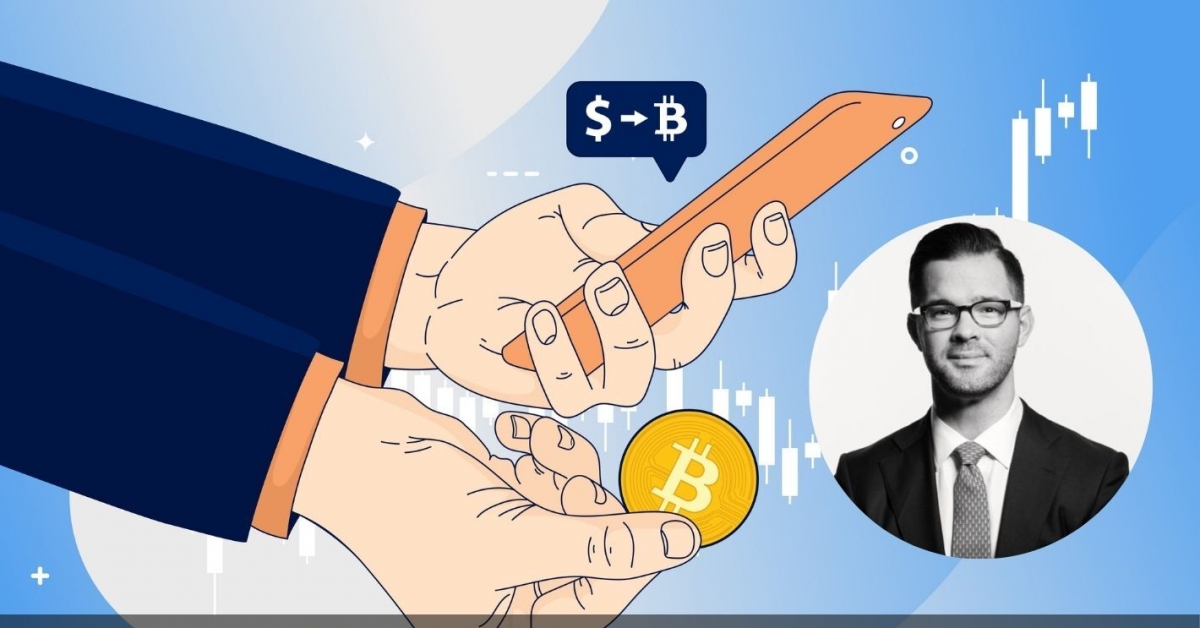PayPal’s Stablecoin Is a Watershed Moment for Finance
“Innovation distinguishes between a leader and a follower.” – Steve Jobs
On August 7, 2023, PayPal announced that they were launching PYUSD. In five years, we will look back at this exact moment and realize this was the beginning of the turn in history. Why do I say that?
Up until this date, the majority of the builders in crypto were just that: in crypto. The largest companies operating the space were exchanges and stablecoin issuers. The largest market capitalizations were for the blockchains themselves. Most of the activity in the space was deeply self-referential, with the ICO boom, DeFi Summer, and the rise of NFTs all catering primarily to users and builders who were already in the space, enabling them to use more of the technology with each other.
Austin Campbell is the founder and managing partner of Zero Knowledge Consulting, and an adjunct Professor at Columbia Business School.
I’ve called this phenomenon the bad habit of building “more crypto for crypto” elsewhere, but up until this point in time, it is largely what defined the growth and evolution of the industry.
That changed this week. PayPal, one of the largest payments companies in the world with 430 million-plus customers, has planted a flag saying that blockchain technology is important enough that they are willing to spend years building a product to evolve their business model. Of course, PayPal still has the PayPal app (and ubiquitous checkout button), PayPal still has Venmo. But now PayPal also has PYUSD.
Why is this so important?
Blockchains are a fundamentally different form of economic organization. A public blockchain, in particular, is an open, many-to-many interface for exchanging value without needing a centralized intermediary.
PYUSD brings us back to the original promise of blockchain: the ability of a two-legged human, anywhere in the world, to send value to another two-legged human without having to trust or pay a bank (or worse, interminably long string of correspondent banks) to facilitate their transactions. This sort of platform erodes monopolies over time, allowing people to form their own financial connections without the need for centralized counterparties to control them. It returns the power over money to the people.
This week the snowball was pushed from the top of the hill
However, the value of a blockchain cannot be unlocked without something to do with it, and more importantly, something to do with it in the real world. This is where PYUSD alters reality as it comes online in various parts of the world over time. Now, by attaching a blockchain to the traditional PayPal platform, someone can send PYUSD to a relative, to a vendor, or to an employee anywhere in the world. (Or, at least, that’s the plan: for now, PYUSD is available only in the U.S.)
This, of course, was true of previous stablecoins, but here is the important difference: that stablecoin now can become a PayPal balance. It can be easily cashed out through traditional rails. It can be kept as the stablecoin itself, knowing others can use these off-ramps. Liquidity increases value, and options increase value. PayPal, with PYUSD, has moved blockchains (it is building on Ethereum) from just being many-to-many for transactions to being many-to-many for the options of what to do with the value received after the transaction has occurred.
Over time, the adoption of blockchain and faster, cheaper, safer transactions will now grow due to this fundamental shift. There are many companies and individuals sitting on the sidelines, unsure if they can trust crypto-native stablecoins, if crypto-native platforms are stable, and if others are going to use the technology to justify their own time and investment.
PYUSD answers those questions: PayPal is building with the battle-tested NYDFS standard for stablecoins by partnering with Paxos; PayPal has been operating globally for multiple decades running a payments network; and PayPal has handled vast amounts of money safely, securely, and without losing user funds. Now, other builders and companies in the space can compose the PYUSD stablecoin into their own apps, their own protocols, their own wallets, or simply into the backend of their own internal systems, and have confidence it will work.
Likewise, PayPal now has the ability to abstract away the fact that crypto is being used, upgrading the backend while the customer has a similar experience to their current products. This process will not be overnight, but will play out over years, or even decades. This week the snowball was pushed from the top of the hill.
The regulatory and geopolitical ramifications of PYUSD should also not be underestimated. Stablecoins are here to stay. As technologists and financial professionals increasingly understand the implications of blockchains, there will be more of these efforts. PYUSD, using what is likely one of the two best regulatory frameworks in the world for stablecoins, is a demonstration that stablecoins can be done safely and with the same principles of fairness, consumer protection and stability that we already value in the traditional financial system.
PYUSD will serve as a call to action for positive technological progress, and a warning to those who thought this would just go away. Those who believed that entrenched, decrepit monopolies would simply grind forward are now finding that they are very, very wrong. PayPal has fired the first shot among traditional firms at scale and become what is likely the first true web 2.5 company in the world, bringing blockchain and finance together at a scale that has previously been unachievable.
I, for one, have never been more excited about the future of finance.
Edited by Ben Schiller.









